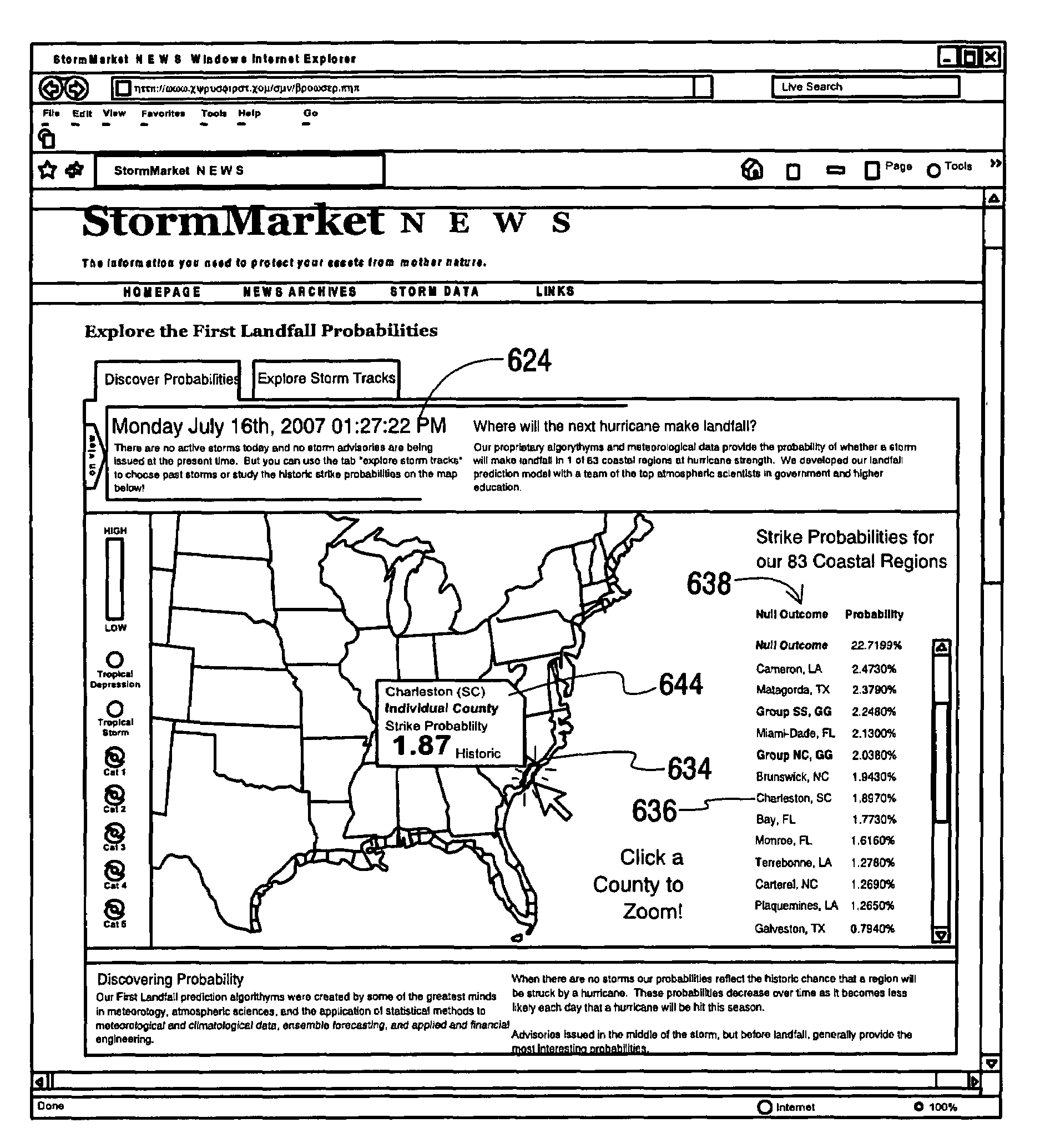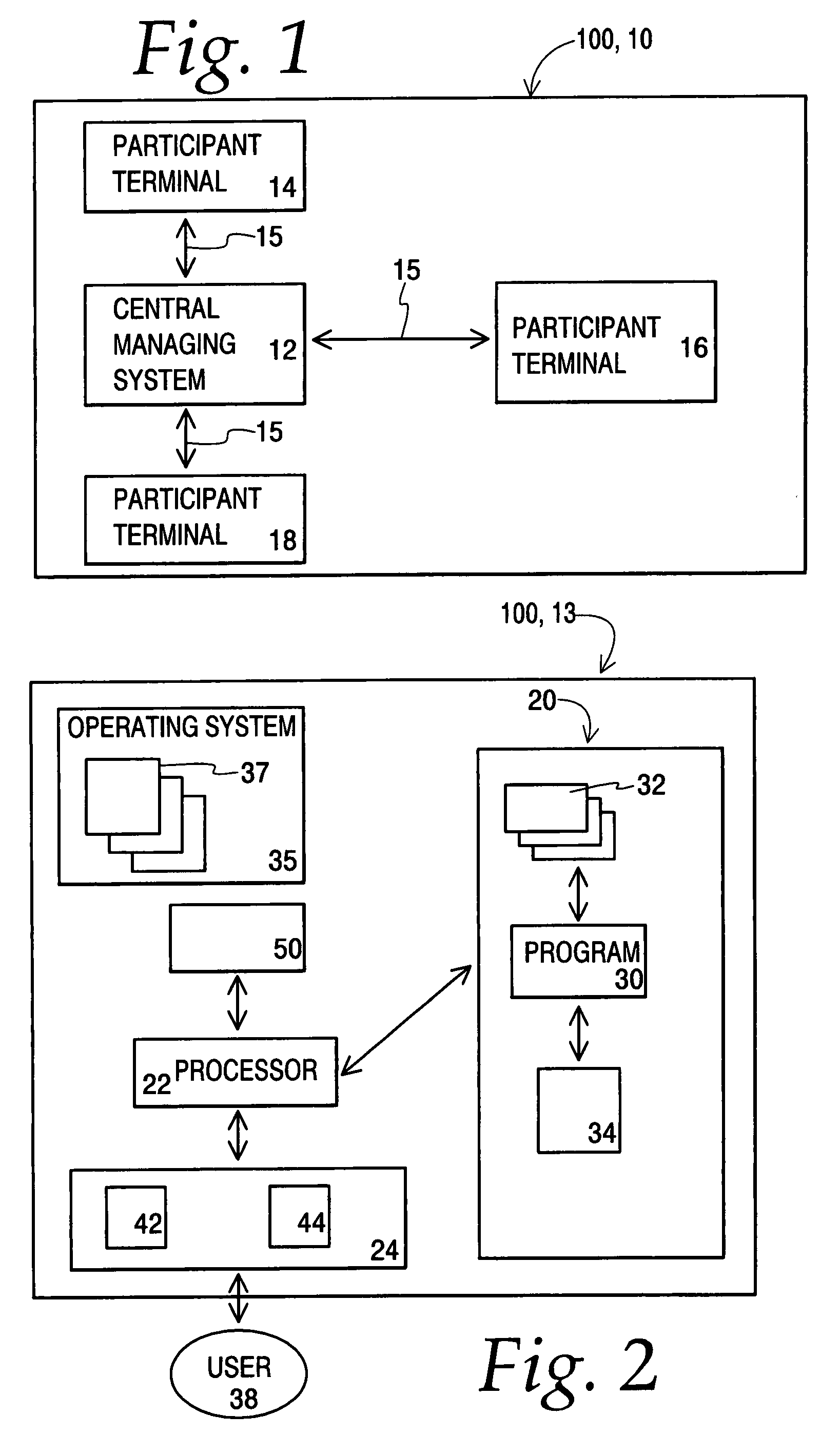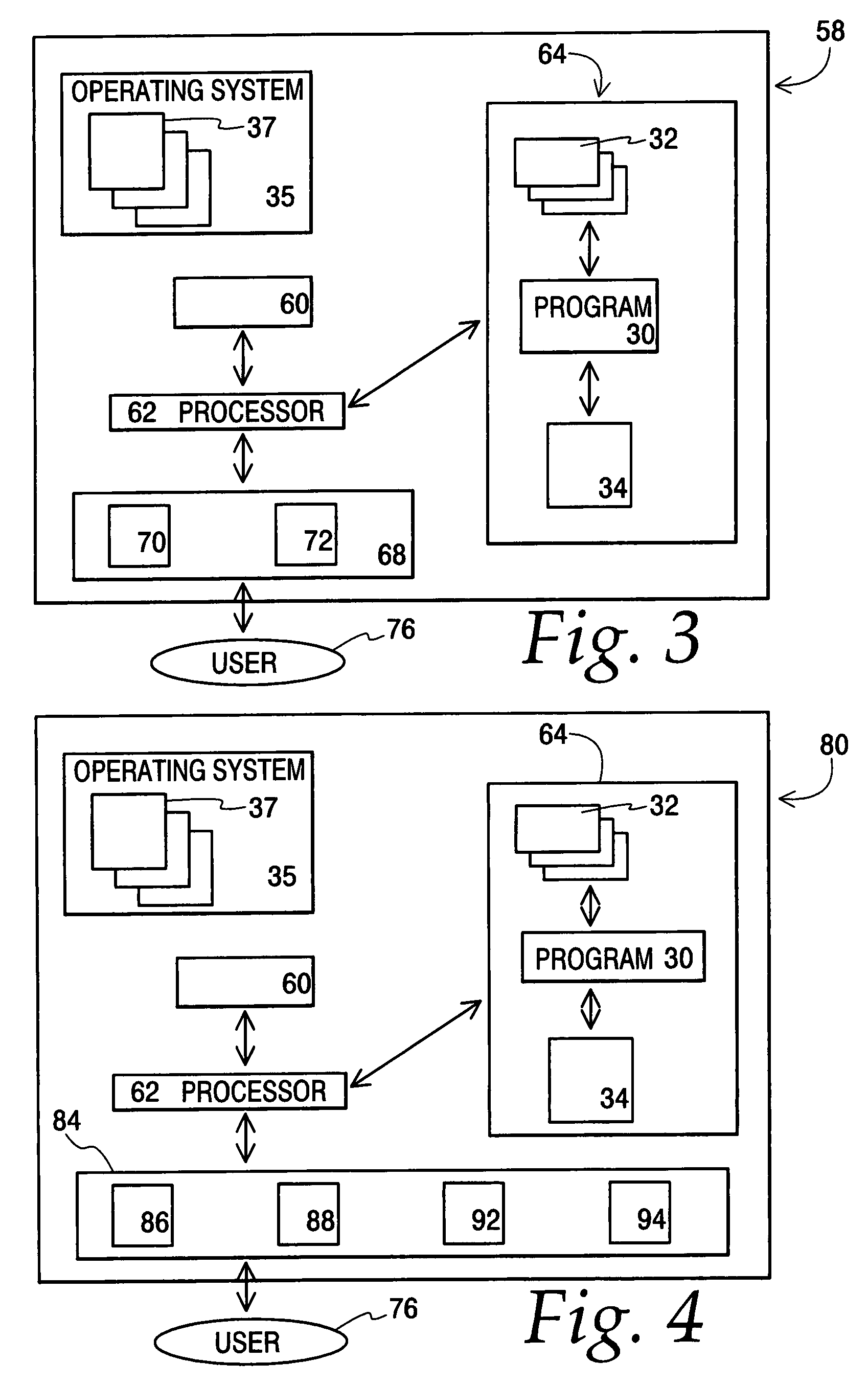Financial activity with graphical user interface based on natural peril events
a technology of financial activity and graphical user interface, applied in the field of financial activities, can solve problems such as inability to predict with exact certainty, impose potentially significant financial burdens arising from property damage, and do not provide any coverage for the outside areas of a home or business. to achieve the effect of boosting governmental financial assistan
- Summary
- Abstract
- Description
- Claims
- Application Information
AI Technical Summary
Benefits of technology
Problems solved by technology
Method used
Image
Examples
case i
[0189] πt-1k>vt-1k. Here the pricing probability for outcome k is too high relative to the aggregate market opinion from Equation 14. This condition can also be diagnosed from the relationship between the indicative payout and the par value (adjusted for time value of money), since
[0190]πt-1k>vt-1k=πt-1kcexp[rj / 365]Wt-1k,sothatWt-1k>cexp[rj / 365].(20)
That is, options for outcome k are overpriced if the indicative payout is greater than the (interest-adjusted) par value. For this case, increasing the pricing probability for outcome k would produce even greater separation between the pricing and market probabilities, so αtk=0 is used in Equation 19, and pricing probabilities for all of the outcomes are unchanged. Any further purchases in outcome k will reduce the indicative payout Wk through increases in Nk, so that vk will rise toward πk. Subsequent purchases in any outcome other than k will drive πk downward, toward vk.
case ii
[0191] Market equilibrium where πt-1k=vt-1k. Here the market is in equilibrium before the purchase of the next option t for outcome k. This purchase will raise the market probability for this outcome, vtk>vt-1k, so the pricing probability πtk should increase correspondingly. Explicit indication of outcome k using superscripts will be suppressed for notational simplicity). We wish to increase the pricing probability πt, using Equation 19, to match the increase in vt resulting from the payout dilution for this outcome produced by the purchase of one additional option. Therefore,
[0192]πt=πt-1+αtπt-1(1-πt-1)=vt=πt-1cexp(rj / 365)Wt=πt-1cexp(rj / 365)(Nt-1+1)Mt-1+πt-1cexp(rj / 365)=πt-1cexp(rj / 365)(Nt-1+1)Nt-1cexp(rj / 365)+πt-1cexp(rj / 365)=πt-1(Nt-1+1)Nt-1+πt-1.(21)
Here use has been made of the fact that, because of the equilibrium at step t−1, Mt-1=Nt-1 c exp(rj / 365). Solving for the equilibrium adjustment parameter,
[0193]αt=[πt-1(Nt-1+1)Nt-1+πt-1-πt-...
case iii
[0194] πt-1kt-1k. Here the options for outcome k are under priced, and αtk should be chosen to adjust πtk upward. Intuitively, this adjustment should be relatively modest (αtk≈1 / Nt-1k) for πt-1k≈vt-1k, and increase as the discrepancy between πt-1k and vt-1k increases, until a maximum value αmax is chosen corresponding to the maximum discrepancy between πt-1k and vt-1k. This maximum discrepancy occurs for Wt-1k=Fc. However, the specific form that the function for α should take between these two endpoints is not clear. Referring now to FIG. 43. two candidate pricing curves for specifying the parameter α, in the range Fc≦W≦c are shown. FIG. 43 shows two candidate pricing curve functions, the consequences of which are explored through simulation in the next section. A value for αmax must also be chosen. When Nt-1 is small, so that αmax / Nt-1, then αt=1 / Nt-1.
[0195]In one example of financial activity according to principles of the present invention, equation 19 implements an adaptive cont...
PUM
 Login to View More
Login to View More Abstract
Description
Claims
Application Information
 Login to View More
Login to View More - R&D
- Intellectual Property
- Life Sciences
- Materials
- Tech Scout
- Unparalleled Data Quality
- Higher Quality Content
- 60% Fewer Hallucinations
Browse by: Latest US Patents, China's latest patents, Technical Efficacy Thesaurus, Application Domain, Technology Topic, Popular Technical Reports.
© 2025 PatSnap. All rights reserved.Legal|Privacy policy|Modern Slavery Act Transparency Statement|Sitemap|About US| Contact US: help@patsnap.com



